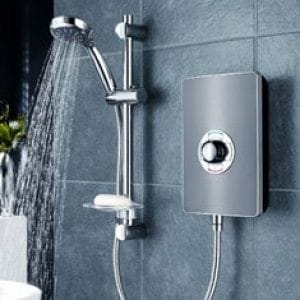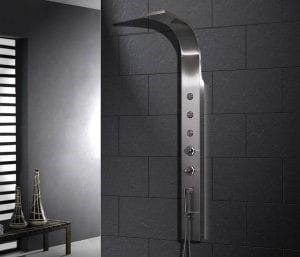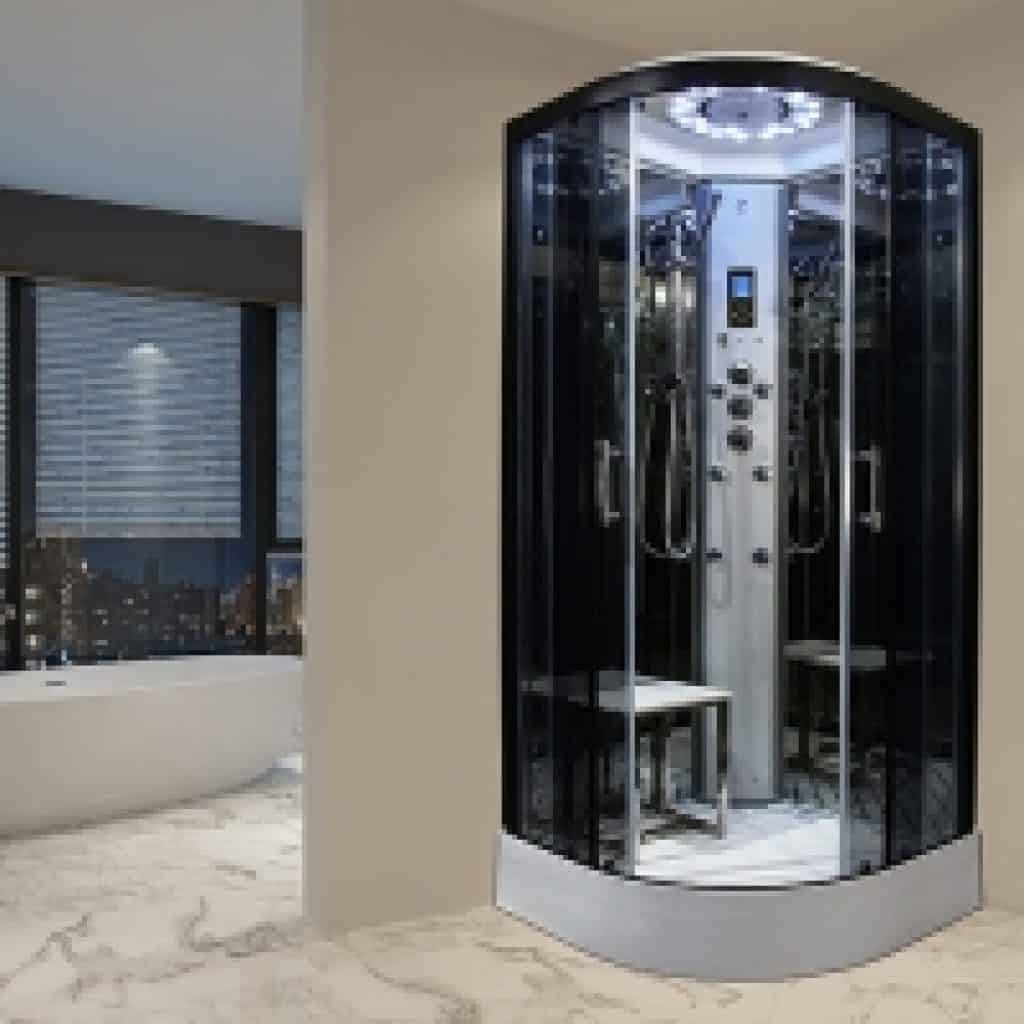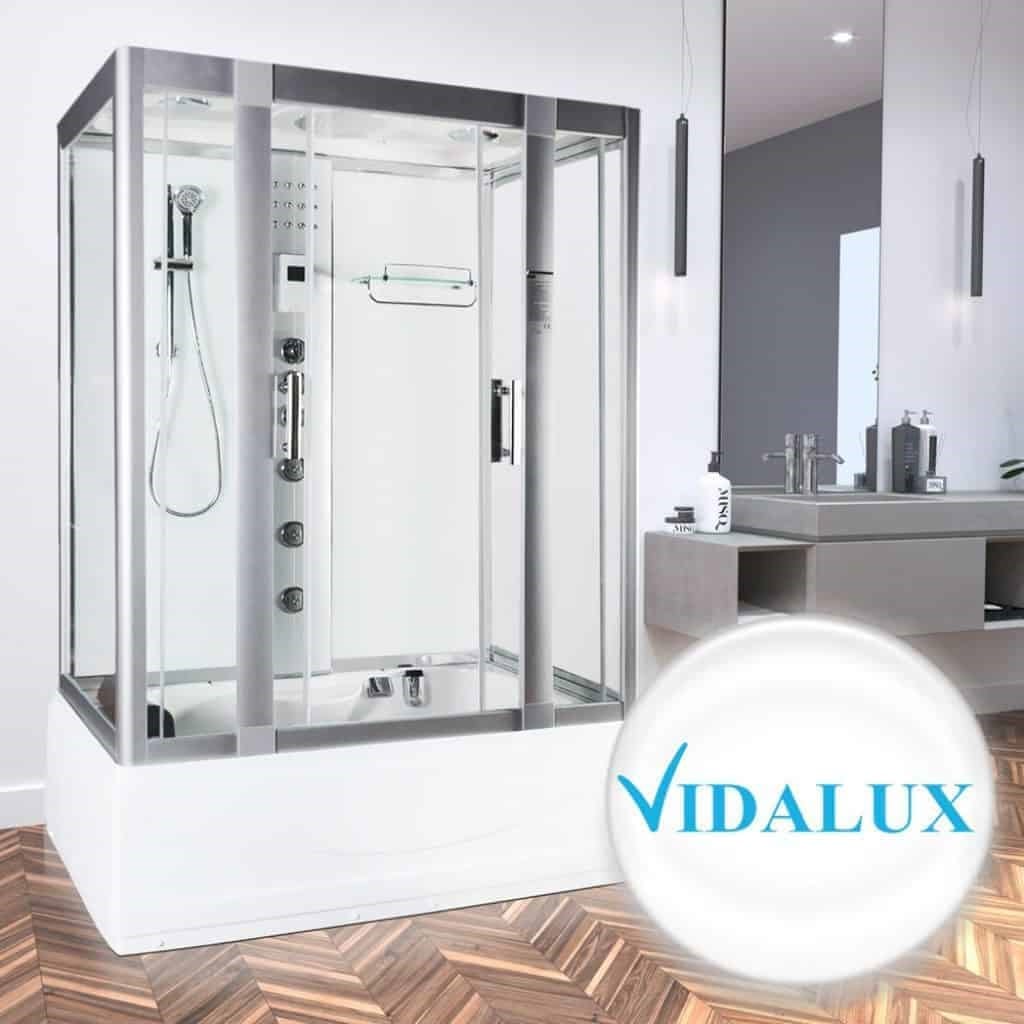We’d suspect that there were very few homes these days, where an overflow shower was the only shower in the place for the simple reason that showering has become so much a part of our daily lives that many people will invest in the best shower they can have for their space and budget. With this in mind, here is a quick guide to choosing the right type of shower for you and your bathroom from the experts at Steam Shower Store
Start by working out what you can have
If you a have a gravity fed system and NO combi boiler than you need an electric shower
If you only have a cold-water supply with no combi boiler, then, currently, your only choice is an electric shower. These have internal heating elements to heat the water, whereas most showers simply output water which has already been heated. Using an electric shower can make it possible to fit showers in parts of your home which aren’t reached by your existing hot water supply without having to spend a fortune on extending the plumbing, for example if you wanted to reclaim part of your garage to use as a gym and just wanted a shower on hand so you could have a quick wash at the end of your work-out.
The smaller your bathroom, the more consideration you should give to using a shower panel
If you’re bathroom is truly tiny, like an en suite then using a shower panel to create a wet room may be your only feasible option. If, however, you have a bathroom which is technically large enough to accommodate a full shower, but only just, then you might want to consider your options. A self-contained shower cabin will ensure that water stays within the cabin walls and a standard shower enclosure will keep most of it within the walls, but will probably require regular maintenance to prevent (or fix) leaks. Using a shower panel to create a wet room will require some up-front work (but then again so does tiling for a standard shower enclosure) but then you have the option to put the floor space you’ve saved to another use or just leave it empty to make the space seem bigger.
If you have a gravity-fed system, you may need a lower-power shower or a pump
Gravity-fed systems are the ones where there is a water tank at the top of the building and it feeds the water supply throughout the building. They are also often called low-pressure systems and the lack of pressure becomes even more of an issue with upstairs bathrooms (where gravity has less time to do its work). This means you either need to look at lower pressure showers or fit a pump. For the record, you can still get a decent shower with a gravity-fed system, you’re just going to need to give it a bit of help if you want features like a power shower or hydrotherapy jets. Also read: Top Accessories for Bathrooms to Consider in Renovations
If you have space, give serious consideration to a self-contained shower cabin
The only advantage traditional shower enclosures have over self-contained shower cabins is that they can be fitted flush to a wall, whereas self-contained shower cabins need a little clear space (about 10 CM). In the very smallest bathrooms this could be an issue. Where there is space for a self-contained shower cabin, then these are generally to be prefered because they are completely waterproof (whereas leakage is generally a continual issue with standard shower enclosures, even ones from high-quality brands). Because of this, tiling behind self-contained shower cabins is entirely optional, which can be a substantial saving (and much less hassle).
Consider whether or not you want to add steam
You can add steam to just about any bathroom (unless it’s utterly tiny) by means of a stand-alone steam generator, but it can be more practical to do so by means of a steam generator in a self-contained shower cabin, since this keeps all the steam contained within the cabin while you enjoy it and then a fan will whisk it away before you open the door, thereby making sure that none of the moisture escapes into the rest of your bathroom.
The health benefits of steam are well known (or if you don’t know there’s plenty of information on the internet) and choosing a steam shower is a very cost-effective and practical way of adding steam to your life.
Decide whether you want an integrated (whirlpool) bath
Showers have long been incorporated over baths, now, however, the reverse is also true and showers can incorporate baths of various sizes, often these are just small tubs (similar to corner baths), but you can have a shower with a full-size bath, even a whirlpool bath for the ultimate in health-promoting luxury. When you are considering this option, in addition to considering space, think about who will be using the bathroom. You might like to have the option of a bath for washing young children (or pets), but baths are harder for older people to access due to the need to step in and out of them.
If you have space for a full bath and want maximum flexibility then you might want to consider having a separate corner bath for children and a shower, without bath, for older people, with adults being able to use either. If you only have space for one, then you could simply fit a shower and use a “tubtrug” or similar for young children and pets. Even the larger ones will fill up very quickly with a decent shower.
Think about the overall look you want to achieve
Most modern showers will fit in with most styles of bathroom, except for those which have a strong, period flavour, but your choice of components can have a strong influence on the overall look. In particular, you need to give some thought to the question of whether you want to use a shower panel or shower valves and, in the latter case, whether you want your valves to be concealed or exposed. Shower panels are essentially all-in-one, compact packages comprising shower valves and a shower head.
They can offer you a whole lot of functionality in a very small space but there is a price to pay for this, not only financially but in terms of flexibility, for example you usually can’t just swap out the head on a shower panel the way you can swap out the head on a standard shower. Using (thermostatic) valves is more affordable and more flexible, if you have the space. If you go down this route, you then have to decide if you prefer concealed valves or exposed valves. With concealed valves, only the controls themselves are displayed, whereas with the latter you can also see the workings, such as the piping. The former gives a very sleek look, which is perfect for certain types of bathroom design, for example if you’re trying to create that “spa” look, while the latter can be a bit edgier and give more of an industrial vibe. If your initial inclination is for concealed valves, then it’s a good idea to check the practicality of your choice in terms of both budget and actual real-world feasibility before setting your heart on it, because they are more challenging to fit and some bathrooms are unable to support them without significant work being required, meaning significant financial outlay. If this is your situation, then don’t be disheartened, you can use some astute design tricks to create the peaceful, streamlined and uncluttered look you want. Also read: Upcoming Interior Design Trends To Look For
7 Tips for styling a shower room or wet room
Go with the flow
Keep flow in mind at all times, not water flow, flow of traffic. Remember that the toilet is an appliance people may need to find quickly, so give its siting first priority, then the sink as it’s going to be used whenever the toilet is used. Your shower fits in after that and it may be best to choose a slightly smaller shower than you could theoretically have to improve flow.
Storage is your second key consideration
From a design perspective, sufficient storage keeps surfaces uncluttered. From a practical perspective “a place for everything” helps keep a bathroom running smoothly. Either way, maximizing storage should be high on your agenda, particularly in a wet room where you need to make sure that anything which needs to stay dry (like toilet paper and towels) is protected from the water output by the shower.
White is not the only colour
It’s often best (although not obligatory) to buy big ticket items such as showers in white or another neutral (such as glass), but you can (and probably should) incorporate at least some other colour somewhere in your bathroom, since bathrooms which are purely white, glass and silver colours can look very cold.
Bring in some brightness
Most bathrooms benefit from a touch of brightness somewhere, if you really want to stick with a cool colour palette, try to find another way of entertaining the eye, such as with a dazzling waterfall tap.
Use some pattern and texture, even in small spaces
You can use pattern and texture even in an all-white bathroom and it can help to bring interest to the space. Pattern can often be used to help resolve issues with a room, such as low ceilings. If you’re using tiles, bigger tiles expand spaces (and are often more affordable) If you want to open up space and/or save money, then opt for larger tiles in plain colours or a simple pattern.
Remember you have five senses
Try to incorporate elements which please the senses of touch and smell as well as vision, bonus points if you can include sound and extra bonus points for taste. You can leave food in a bathroom, just as long as it’s wrapped.
twitter facebook linkedin whatsapp
This subscription won’t wake you up in middle of the night, we are not your sweetheart! Register today for free and get notified on trending updates. I will never give away, trade or sell your email address. You can unsubscribe at any time.










